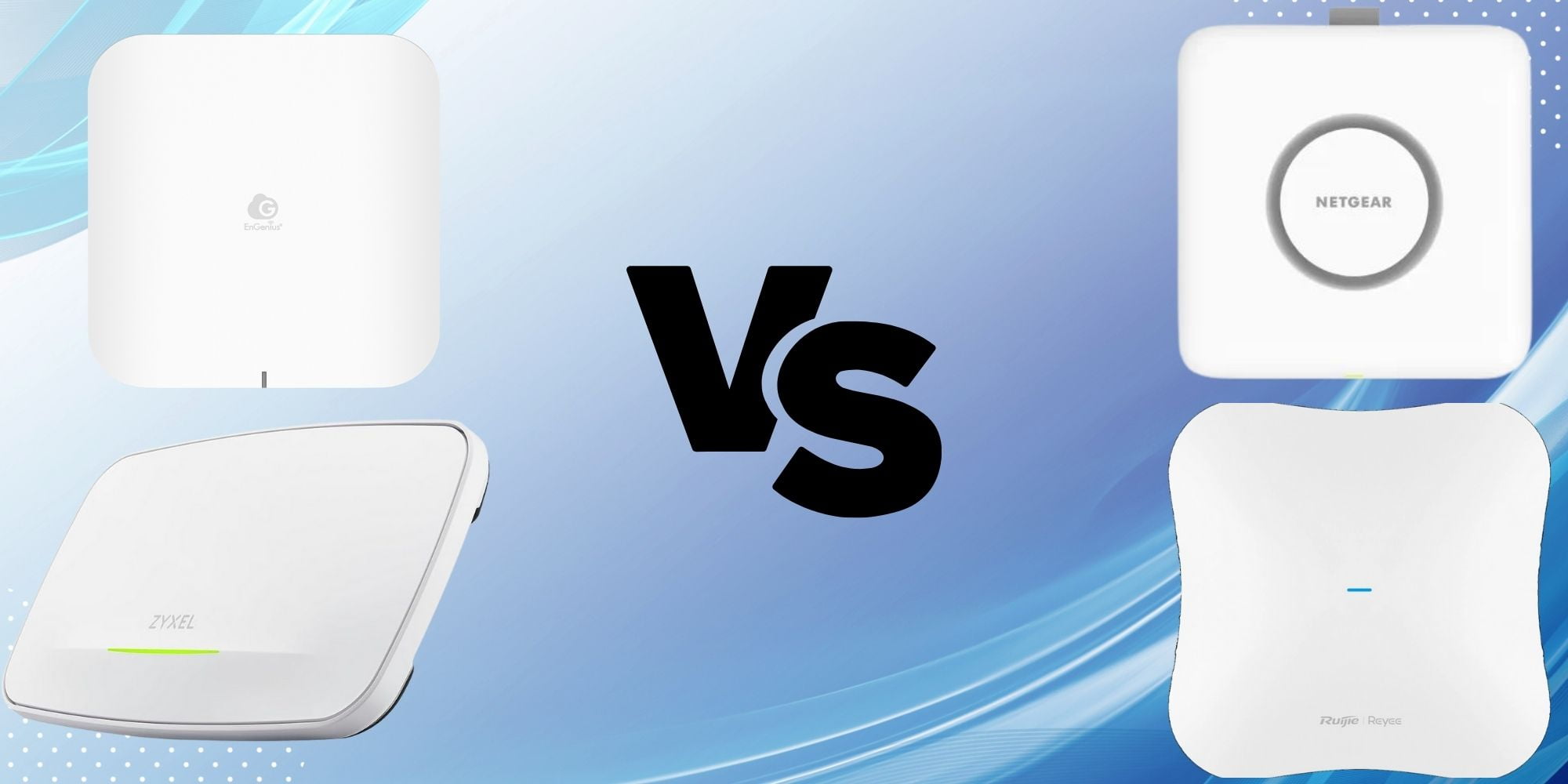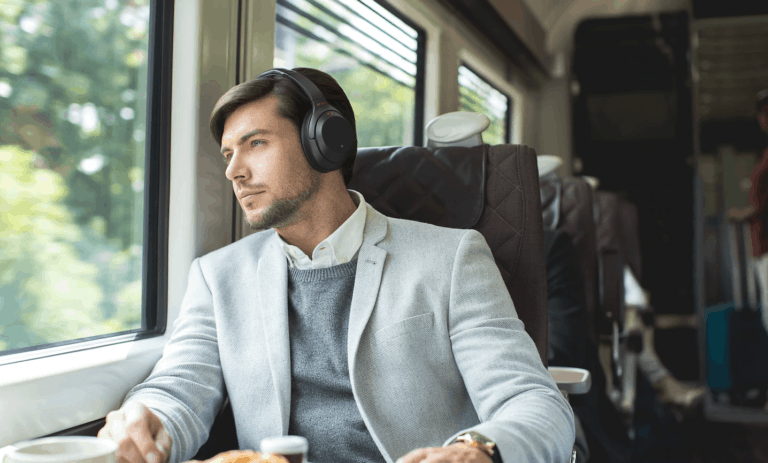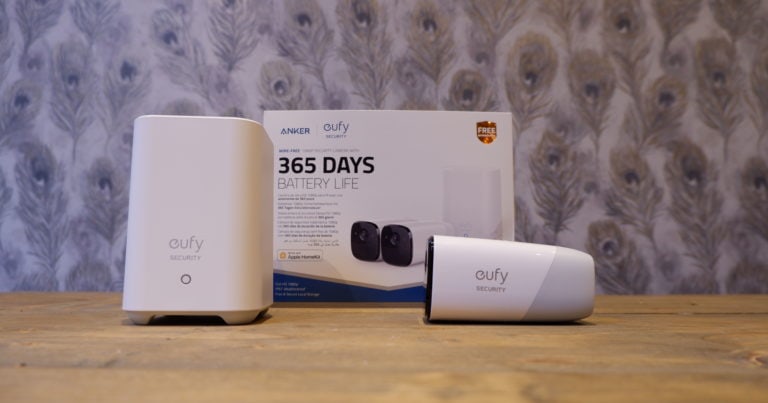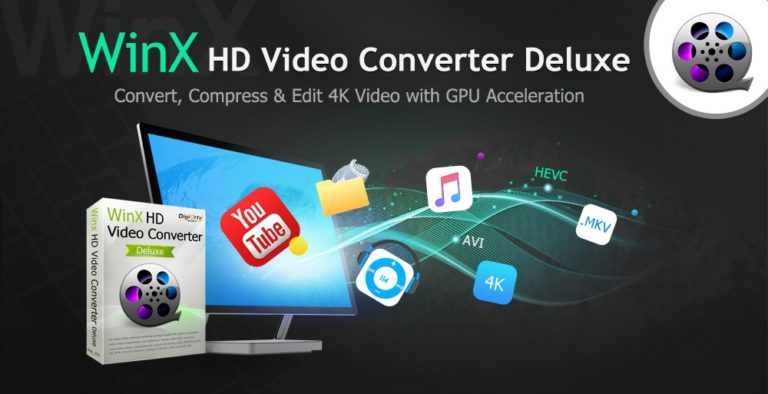Any links to online stores should be assumed to be affiliates. The company or PR agency provides all or most review samples. They have no control over my content, and I provide my honest opinion.
I am currently reviewing the EnGenius ECW536 WiFI 7 access point, EnGenius’s flagship access point. It has 4×4 MIMO for each band and two 10GbE ports, one of which is POE for power.
There is a growing number of WiFi 7 capable access points that you can now buy, and I have already compared a small number of affordable WiFI 7 APs.
This comparison looks at the premium-priced, high-performance options that are out there.
These are best suited for demanding enterprise environments with many users who want the best WiFi speeds.
Looking at different brands is likely moot for many people, as most businesses will stick with the ecosystem they have already invested in. But if you are building a network from the ground up, it is worth considering your options.
Engenius ECW536 vs Zyxel WBE660S vs Netgear WBE750 vs Ruijie Reyee RG-RAP73HD Specification Comparison
| EnGenius ECW536 | NETGEAR WBE750 | Zyxel WBE660S | Ruijie RG-RAP73HD | |
|---|---|---|---|---|
| WiFi Standard | 802.11be (WiFi 7) | 802.11be (WiFi 7) | 802.11be (WiFi 7) | 802.11be (WiFi 7) |
| Tri-Band | Yes (2.4 GHz, 5 GHz, 6 GHz) | Yes (2.4 GHz, 5 GHz, 6 GHz) | Yes (2.4 GHz, 5 GHz, 6 GHz) | Yes (2.4 GHz, 5 GHz, 6 GHz) |
| Max Throughput | 18.4 Gbps total (11.6 Gbps on 6 GHz) | 18.4 Gbps total (11.6 Gbps on 6 GHz) | 22 Gbps total (11.53 Gbps on 6 GHz) | 18.67 Gbps total (11.53 Gbps on 6 GHz) |
| 2.4GHz: 1,400 Mbps 5GHz: 5,800 Mbps 6GHz: 11,600 Mbps | 2.4GHz: 1,147Mbps 5GHz: 5,765Mbps 6GHz: 11,530Mbps | 2.4 GHz: 1376 Mbps 5 GHz: 8646 Mbps 6 GHz: 11530 Mbps | 2.4 GHz: Up to 1378 Mbps 5 GHz: Up to 5760 Mbps 6 GHz: Up to 11520 Mbps | |
| Bandwidth | 5GHz: 20/40/80/160MHz 6GHz: 20/40/80/160/320MHz | 5GHz: 20/40/80/160MHz 6GHz: 20/40/80/160/320MHz | 5GHz: 20/40/80/160/240MHz 6GHz: 20/40/80/160/320MHz | 5GHz: 20/40/80/160MHz 6GHz: 20/40/80/160/320MHz |
| MIMO | 4×4:4 on all bands | 4×4:4 on all bands | 4×4:4 on all bands | 4×4:4 on all bands |
| Antenna | 12 integrated omni-directional | 8 integrated omni-directional | Smart antenna | 14 PIFA antennas |
| Antenna Gain | 2.4 GHz: 4 dBi 5 GHz: 6 dBi 6 GHz: 6 dBi | 2.4 GHz: 4.4 dBi 5 GHz: 6.3 dBi 6 GHz: 3.1 dBi | 2.4 GHz: 4 dBi 5 GHz: 6 dBi 6 GHz: 6 dBi | 2.4 GHz: 4 dBi 5 GHz: 6 dBi 6 GHz: 6 dBi |
| Max Transmit Power UK | 2.4GHz/5GHz/6GHz: Up to 25 dBm / 24 dBm / 24 dBm | Not specified | US 2.4GHz/5GHz/6GHz: 29/28/23 dBm EU 2.4GHz/5GHz/6GHz: 19/25/22 dBm | 2.4 GHz/5 GHz/6 GHz: 20/30 /23 dBm |
| Ethernet Port | 1x 10GbE PoE++, 1x 10GbE | 1x 10GbE/Multi-Gig PoE++ | 1x 10GbE PoE++ | 1x 10GbE PoE++, 1x 1GbE, 1x 10GbE SFP |
| Max Clients | 512 | Not specified | Not specified | 1500 (512 per band) |
| Max SSIDs | 8 per band | 8 | 8 | 8 |
| PoE Standard | 802.3bt | 802.3bt | 802.3bt | 802.3at/bt |
| Max Power Consumption | 38W | 39W | 41W | 60W |
| Dimensions | 230 x 230 x 37 mm | 172 x 172 x 44 mm | 310 x 178 x 56 mm | 258 x 258 x 59.5 mm |
| Weight | 1270 g | 950 g | 1412 g | ≤ 2000 g |
| Management | EnGenius Cloud / Standalone via Web | NETGEAR Insight Cloud / Standalone via Web | Nebula Cloud, on-premises controller, standalone | Reyee Cloud, app |
Engenius ECW536 vs Zyxel WBE660S vs Netgear WBE750 vs Ruijie Reyee RG-RAP73HD Key Differences
There is not much difference between the four options I have listed. They all have similar flagship specs, but there are some key differences:
Ruijie Reyee RG-RAP73HD
The Ruijie RG-RAP73HD is the most expensive option at nearly £1k, but it also appears to have the best specification with 14 PIFA antennas (it has 5 antennas for 5GHz & 6GHz), a higher transmit power than three network ports, including 10GbE, Gigabit and a 10GBase-X SFP port. It appears to support a lot more clients with up to 512 per band. Apart from the high price, all these features make it the most power-hungry at 60W and heaviest at 2kg.
The 10GBase-X SFP port is interesting. It will require a transceiver, and it obviously won’t be able to provide power to the AP, so you will still need to power it up. Ruijie appears to be marketing this as a port designed to uplink to another switch.
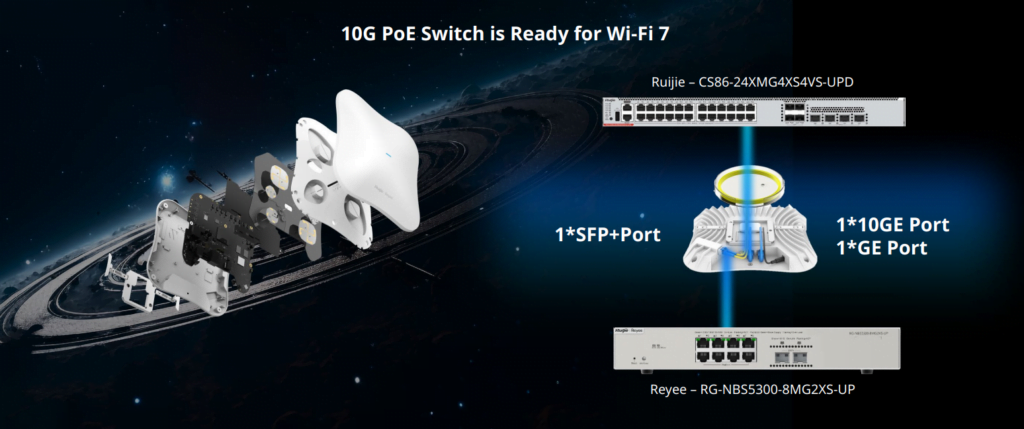
EnGenius ECW536
The Engenius ECW536 launched at $1000, making it one of the most expensive options, but it has been permanently reduced to $500 (£391), which technically makes it the most affordable option on this by a long way. The problem is that you can’t currently buy it in the UK.
Apart from its attractive price in the UK, the EnGenius ECW536 is also equipped with two 10GbE ports, allowing you to daisy chain devices and avoid taking up valuable 10GbE ports on your switch.
There is little difference in power draw between this (38), the Zyxel (41W), and the Netgear (39W).
In terms of the overall dimensions, it has a similar overall footprint to the Zyxel but has a squire shape rather than rectangular and is slightly lighter.

Zyxel WBE660S
The Zyxel WBE660S is relatively affordable, being priced at around £545, and it is available on Amazon.
Interestingly, it has the highest-rated throughput of 22 Gbps in total. It achieves this due to the higher 8646 Mbps throughput on the 5 GHz band, which is achieved by using a 240MHz channel width, whereas the other brands limit this to 160MHz. It is worth noting that 240MHz could be problematic in congested environments, so I wouldn’t put too much value in this.
Zyxel also has a smart antenna. This integrated smart antenna technology mitigates co-channel interference by consistently monitoring connections and adjusting antenna patterns dynamically.
This also has an additional Ethernet port, which is limited to just gigabit. It also has a USB-C port for power, in addition to PoE. I much prefer this over DC barrel ports as it provides more flexibility.
With Zyxel, you have three management options: the Nebula cloud management, on-premises controller, and standalone via the web.
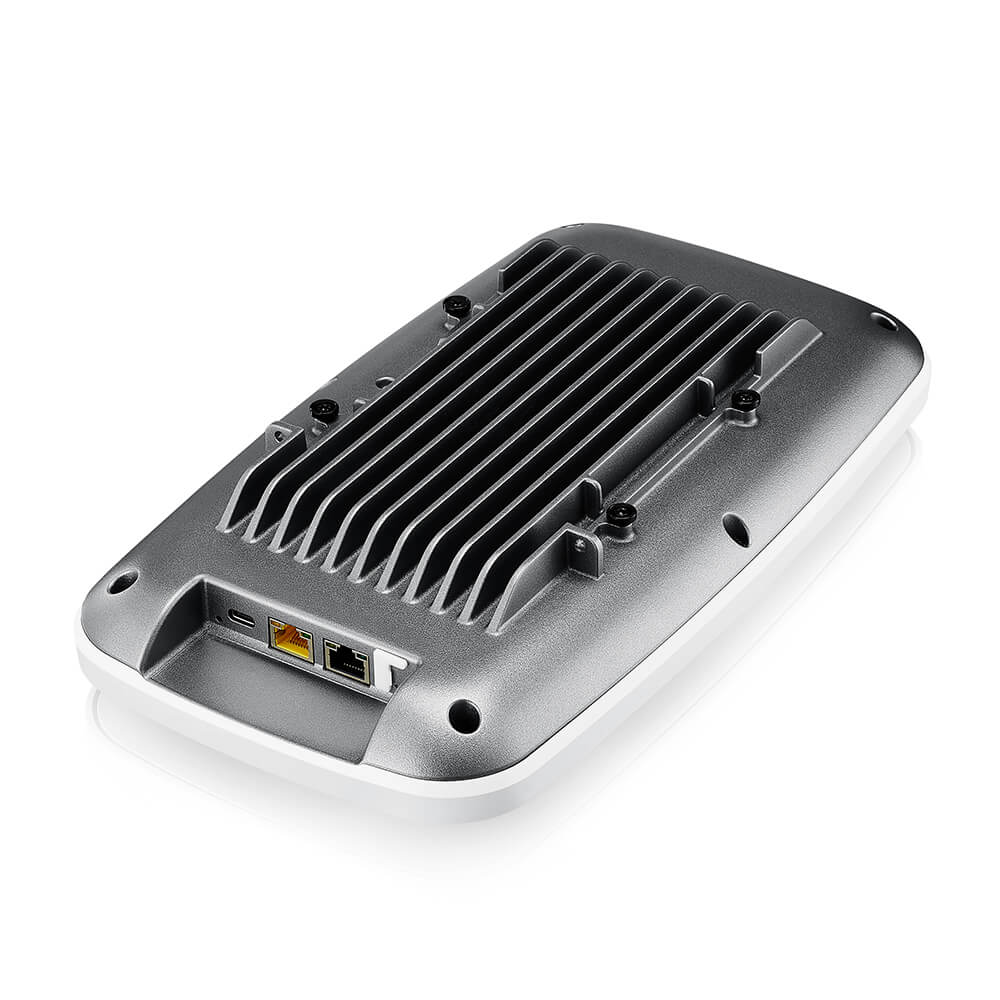
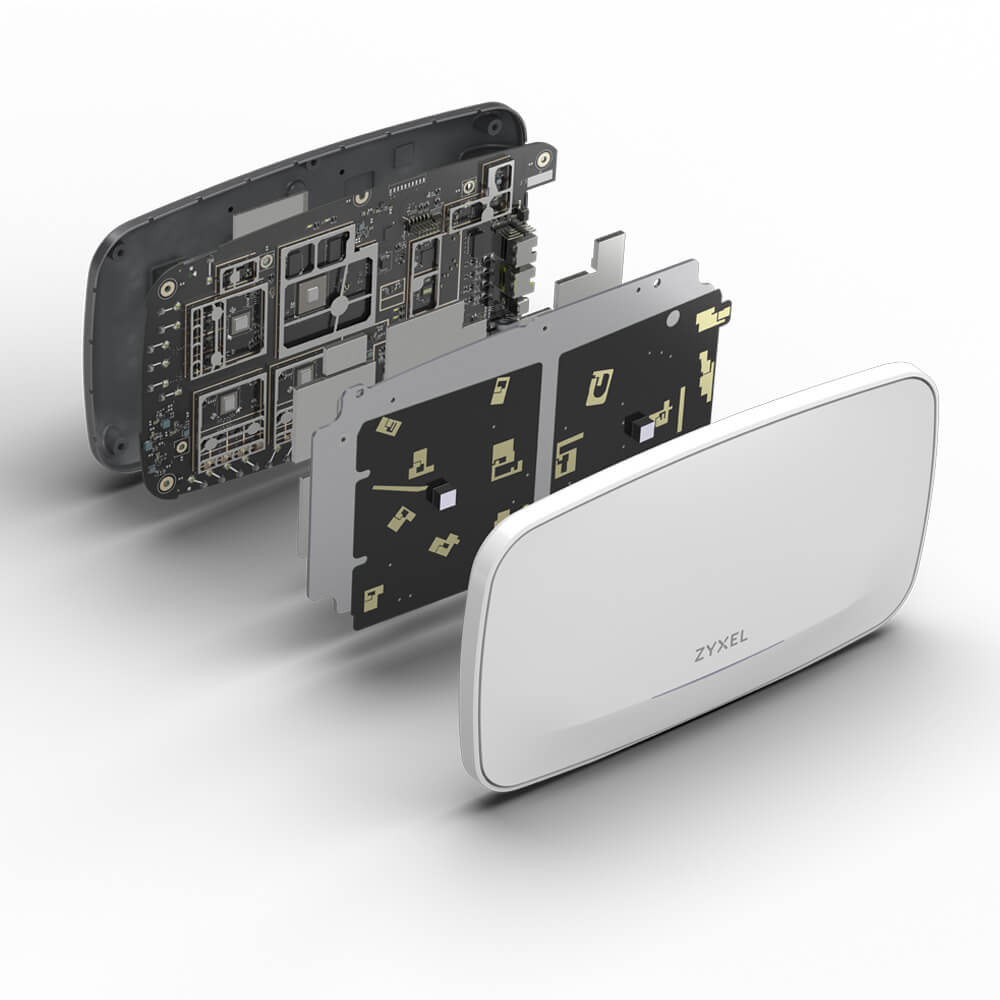
Netgear WBE750
The Netgear WBE750 appears to have been recently launched. Netgear states that it has a small form factor for a more incognito appearance. It is the lightest option on this list by far, with a smaller overall footprint.
Unlike EnGenius and Zyxel, the Netgear Insight cloud management system lacks a free tier, but the monthly fee is very low at £8.95 per device/per year. Alternatively, it can be managed locally via the web GUI.
Pricing is higher than the Zyxel and EnGenius, which is around £650.

Overall
When it comes to enterprise hardware like these access points, the overall specification and price for the individual devices are less important than the ecosystem overall.
If a business is already using Zyxel Nebula, they are not likely to deploy EnGenius access points.
If you are building from the ground up, you then have to consider the cost, features and support for all the other hardware, such as switches, routers, PDUs, etc.
That being said, it is interesting to look at what different brands are doing.
The Ruijie Reyee RG-RAP73HD is the most impressive of the options but also the most expensive by far.
The Engenius ECW536 is affordable enough in the US that it could appeal to prosumers/SOHO, and the extra 10GbE port helps differentiate it from the Zyxel and Netgear.
I have been a big fan of Zyxel Nebula, and I thought the Zyxel NWA130BE was superb. They are the only option that allows 240MHz on the 5GHz, and they have the smart antenna, so the overall performance should, in theory, be better than the others.
The Netgear doesn’t quite compete with others, but there is such a small difference that it is unlikely to have that much real-world difference. The main selling point of this access point is that it has a significantly smaller footprint than the others, being 44% smaller than the Zyxel and considerably lighter, which should make it more discrete than the other options.
I am James, a UK-based tech enthusiast and the Editor and Owner of Mighty Gadget, which I’ve proudly run since 2007. Passionate about all things technology, my expertise spans from computers and networking to mobile, wearables, and smart home devices.
As a fitness fanatic who loves running and cycling, I also have a keen interest in fitness-related technology, and I take every opportunity to cover this niche on my blog. My diverse interests allow me to bring a unique perspective to tech blogging, merging lifestyle, fitness, and the latest tech trends.
In my academic pursuits, I earned a BSc in Information Systems Design from UCLAN, before advancing my learning with a Master’s Degree in Computing. This advanced study also included Cisco CCNA accreditation, further demonstrating my commitment to understanding and staying ahead of the technology curve.
I’m proud to share that Vuelio has consistently ranked Mighty Gadget as one of the top technology blogs in the UK. With my dedication to technology and drive to share my insights, I aim to continue providing my readers with engaging and informative content.

